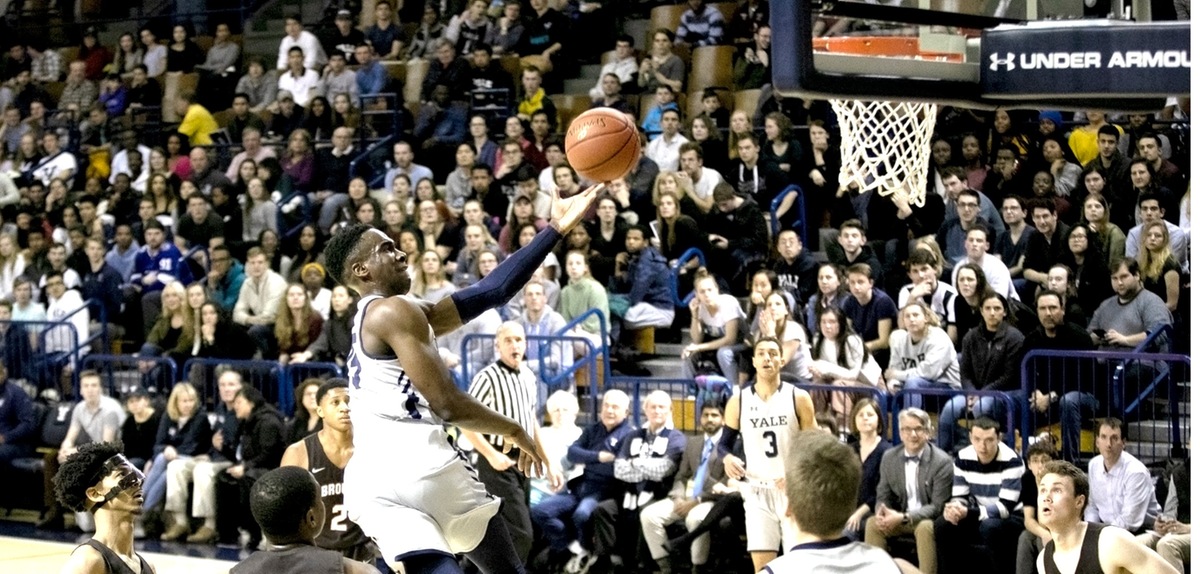- Attacking style not the only reason some Tottenham fans will back Ange Postecoglou until the bitter endPosted 4 months ago
- Paris Olympics takeaways: What did Team USA’s crunch-time lineup say about NBA’s hierarchy?Posted 10 months ago
- Zach Edey posted an easy double-double in Summer League debut. Here’s why he’ll succeed in NBAPosted 11 months ago
- What will we most remember these champion Boston Celtics for?Posted 11 months ago
- After long, seven-year road filled with excruciating losses, Celtics’ coast to NBA title felt ‘surreal’Posted 12 months ago
- South Florida men’s basketball is on an unbelievable heater– but also still on the bubblePosted 1 year ago
- Kobe Bufkin is balling out for Atlanta Hawks’ G League team. When will he be called up to NBA?Posted 1 year ago
- Former Knicks guards Immanuel Quickley, RJ Barrett may yet prove Raptors won the OG Anunoby tradePosted 1 year ago
- Rebounding savant Oscar Tshiebwe finally gets NBA chance he’s deserved for yearsPosted 1 year ago
- Is Tyrese Maxey vs. Tyrese Haliburton the next great NBA guard rivalry?Posted 2 years ago
Yale student group has computerized remaining Ivy games over 10,000 times to help find chances for each team in league race
- Updated: February 14, 2019

Miye Oni and current league leader Yale are considered the favorite to represent the Ivy in the Big Dance.
By: Joel Alderman
Leave it to Ivy Leaguers to transform their interest in the conference basketball race into an academic exercise. At least that is what is going on at Yale.
In and around New Haven it’s called the Yale Undergraduate Sports Analytics Group (YUSAG). It studies other leagues and sports, college and pro, as well as Ivy League hoops. In order to take part in these studies, the students obviously are very bright and computer literate, and there are certainly enough of those at Yale to put together a good group to fit those qualifications.
How they did it
The season reaches the halfway point this weekend, after which each team will have played eight contests with six more to go. Meanwhile, YUSAG has run about 10,000 simulations of every game for the rest of the Ivy League schedule starting Feb. 15th. The computerized outcomes were combined with those from games that were actually played and other factors to project the final league standings. The result was something called a statistical model.
According to Luke Benz, who described the process and its ramifications in The Yale Daily News, “These power rankings are not purely analytical. Rather, they seek to capture a combination of statistical ratings and performance in conference play both now and in the future.”
This is not a new concept. It has been put to use for pro baseball and football for several years. In the Ivy League the statistical model has become more significant the past three years with the introduction of Ivy Madness, the four team playoffs designed to determine the league’s automatic representative in the NCAA Tournament, aka March Madness.
What is a “statistical model?”
In order to understand better what a statistical model is, I deferred to the authoritative Wikipedia. Here is its explanation:
A statistical model is a mathematical model that embodies a set of statistical assumptions concerning the generation of some sample data and similar data from a larger population. A statistical model represents, often in considerably idealized form, the data-generating process.
The assumptions embodied by a statistical model describe a set of probability distributions, some of which are assumed to adequately approximate the distribution from which a particular data set is sampled. The probability distributions inherent in statistical models are what distinguish statistical models from other, non-statistical, mathematical models.
Now you know what this is all about. Or do you?
In either case let’s trust the students and get back to their findings about the Ivy League basketball race. This, according to Benz, is what their recent run of over 10,000 simulations has concluded.
Yale should hold on to first place
Yale, in first place (5-1) going into Friday night, has a 99.9% probability of qualifying, including 87.8 percent chance of finishing in first place and 65.1% to punch a ticket to the Big Dance. Its big gun is Miye Oni, who though a junior may be playing his last year of college ball as the NBA scouts are watching him intently. Oni is also looking at being named the Ivy League Player of the Year.
Harvard (4-2), the only team to have beaten Yale so far, was surprised at home by Cornell last week, but enjoys a 79.2 chance of getting to the league’s final four, though its chances of qualifying in first place are a surprisingly low 5.3 percent. One of the causes for optimism in Cambridge has been the gradual rounding into form of Bryce Aiken, last season an all-Ivy guard, but who has had limited playing time this year. He scored 44 points in the triple overtime win over Columbia last week.
Surprising Cornell (4–2) is one of three teams tied for third place after consecutive road wins over Dartmouth and Harvard. The Big Red, however, can ill afford a letdown. The Yale group claims that the team in Ithaca, N.Y., has the second most difficult schedule yet to play. They are rated 26.7 to make the playoffs but only 1.0 to win them.
Princeton, (4-2) which has had to combat the distraction of its star shotmaker, Devin Cannady, being arrested and suspended for three weeks, is hopeful of recovering from back-to-back road losses to Yale and Brown. The Tigers are also among the three tied for second place. The Tigers have the second best chance (85.1) to make the playoffs, 62 percent to qualify first, and 7.0% to win.
Pennsylvania (2-4) and Princeton, despite its record, are the disappointments of the year so far. Although outside the Ivy the Quakers have done quite well, especially in capturing the Philadelphia Big Five championship (4-0), things in the Ancient Eight have not gone as well. But on the bright side for Penn is that six of its final eight games will be the in the friendly confines of the Palestra, as it looks to make the Ivy postseason for the third straight year. Chances are 61.0 for that to happen and 10.2 to get to the Big Dance for the second straight year.
Brown (2–4), along with Yale, has the advantage according to the YUSAG, of having the easiest remaining schedule. The Bears get a fairly manageable 45.0 shot at the post-season, but just 4.8% of advancing to the NCAA’s Big Dance.
Dartmouth (2–4) has had the most frustrating losses in the Ivy. Three of the four have been by five or fewer points. The Big Green shows only a 3.6 percent chance of getting to the league playoffs and 0.1 of winning.
Finally we come to Columbia (1–5), which lost out on its chance to gain the conference spotlight in the triple overtime loss to Harvard, when it was victimized by two Aiken buzzer beaters, one of which that earned a showing on ESPN’s SportsCenter Top-10 plays.
The Lions, the computers say, have the toughest remaining schedule of any team in the conference, with 0.1 chances to make the playoffs, and the same to win it.
Things have changed
In 2017 and prior, when the league’s so-called 16-game tournament champion received an automatic bid to March Madness, fans of many of the teams lost interest during the season as their teams had less and less of a chance. But the four team playoff format keeps more teams in contention for a longer time. The computer scholars are helping to capitalize on that and keep interest alive.
If you have not attended, or are not currently attending a school like Yale and don’t understand all this, don’t worry about what the computers think will happen. In only a few weeks you’ll know for sure.



